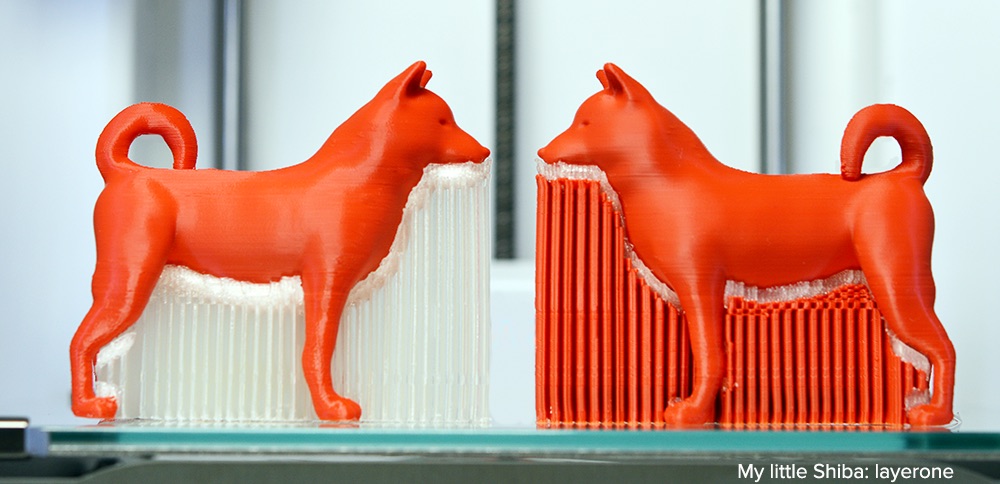Design Tips for 3D Printing Objects
Because there is no such thing as MAGIC don’t be surprised if your printed objects are not perfect. But, do not let printing limitations hold back your creativity. If you put time into your design you can end up with something amazing. Consider this your first step into 3D modeling so do not be afraid to make mistakes.
Consider functional aspects of your design. Maybe you want to smooth sharp edges or add mounting holes.
Be wary of the files you find online. They may be made for a different printer or a different material so we cannot guarantee they can be manufactured by us. Also just because someone draws it does not mean it can actually be printed at all.
Thin walls and intricate shapes may have trouble printing.

Some prints require support material that requires cleanup.

Floating pieces will not print successfully. You can add bridges to connect sections.

What else can I do?
You can continue to experiment with 3D modeling! You can also explore printing with other materials and at higher resolution (more detail) by having your design printed commercially. Companies such as Shapeways and Sculpteo can print your exported STL model in various materials. The cost varies a lot depending on the material you use and your desired turnaround time. PRO TIP: Be sure to check after you upload your file to confirm that the dimensions are correct because STL files do not actually have dimensions attached.
This wraps up our training, but the learning never ends! We’ve included a variety of Further Resources for 3D Design and Printing for you to consult.
| Introduction |
| Lesson One: What is 3D Modeling |
| Lesson Two: Modeling Using Tinkercad |
| Lesson Three: Using Sketchfab |
| Lesson Four: Intro to 3D Printing |
| Lesson Five: More 3D Printing |
| Lesson Six: 3D Printing Pro Tips |
| Further Resources |